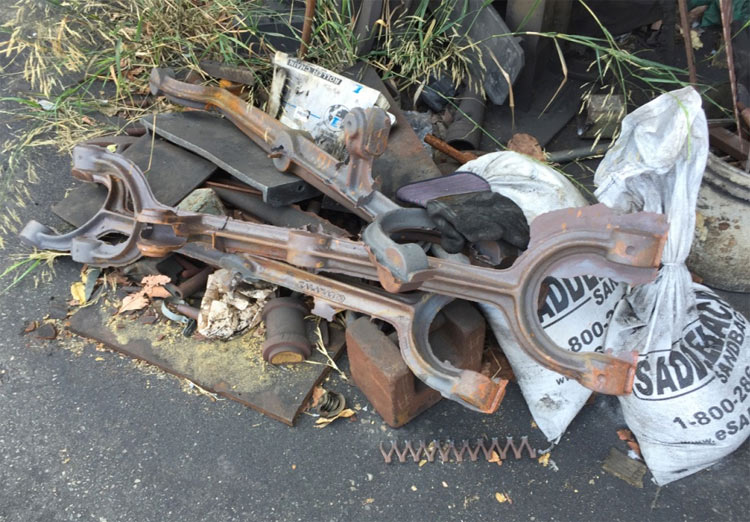
We sell handcar kits and fully assembled handcars. For prices and options see the store page for more information.
Our Kalamazoo handcar is a continuation of the Kalamazoo handcar line discontinued in the late 1950s. Aside from minor changes, the handcar offered in the 1950s was the same handcar sold in the 1890s.

Our handcars are equipped with wood center wheels that run smoother and quieter than steel centered wheels. They also shave several pounds off the car, enabling the car to be picked up over switches by one person as demonstrated in the video. Handcars weigh approximately 500 pounds.
Building these vehicles are not inexpensive, especially if you are not a machinist or metalworker; however our kits are reasonably priced and extremely accurate. All you need to do is supply the lumber.
Iron Parts
Our handcars contain dozens of cast iron parts, many that were molded from original handcars components of the late 19th century. We created a complete set of iron foundry patterns used to create sand moulds for casting iron into the various parts.

Pattern collection for our handcars.

The pump handle is the most complicated casting found on the car.

As a result of its complexity, most of the pours end up as defects.

The pump handle for our car was duplicated from this original part borrowed from the Pacific Southwest Railway Museum in Campo, California.
Large Gear
One of the more complicated and expensive parts to manufacture is the large 18.5 inch diameter drive gear found on the handcar.

A gear blank is created by pouring molten iron into a sand mould.

This large mill machines the faces to create precision surfaces so teeth can be cut.
Teeth being cut using CNC gear cutting machine.

Completed pile of gears ready for use.
Wheels
The most difficult component to manufacture was the lightweight steel wheels that carry the handcar. Prior to the 1930's wheels were fabricated by spinning steel plate around a die. Our wheels are fabricated using the same technique. In later years most handcars were delivered with durable wheels made entirely of steel. Our wood wheels will hold up just as well, while running smoother and quieter than any steel wheels if not abused. Since modern day handcars are not used for the grueling work they were intended for, wood centered wheels are not only acceptable, but also preferred.

This pile of 3/16 inch thick steel will become a wheel. The wheel on top of the stack is smaller than the wheel used on a handcar as it is a velocipede wheel, but is being used as a sample for our wheel manufacture. From this sample, a CAD model was created of the correct 20 inch handcar wheel, and a CNC machine was used to create the massive tooling.

This machine spins the plate, and while heat is applied with torches, the operator leverages the plate around a heavy 1000+ pound die that forms the wheel. In another process a turnover flange is created on the inside to further strengthen the wheel. It took us five years to find a manufacture capable of producing this feature at an affordable price.

Finished formed wheel before heading to the water jet cutting shop for final hole boring.

Pickup truck full of finished wheels.
Video showing the wheel building process: